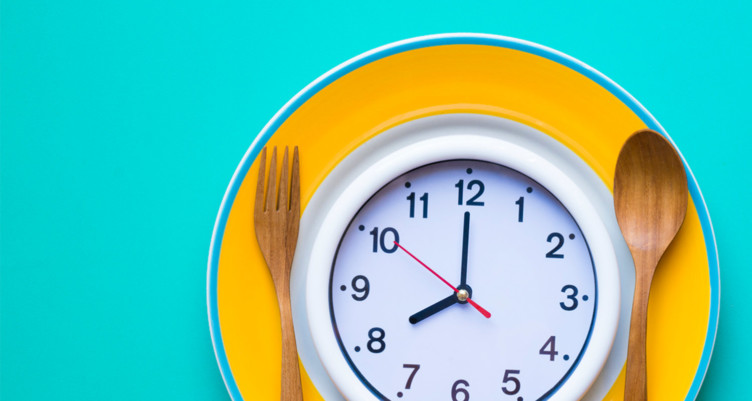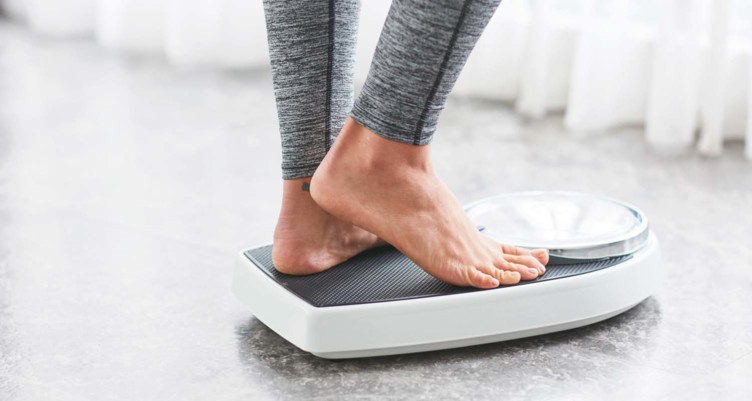The Complete Intermittent Fasting Guide for Beginners

- Intermittent fasting is an eating style where you eat within a specific time period and fast the rest of the time.
- Intermittent fasting can be an effective way to manage your body weight. But research shows it has tons of other health benefits, too—like more energy, brain power and cellular protection.
- The best part? There are tons of different ways to approach intermittent fasting, including changing your eating window and fasting schedule.
Intermittent fasting, also called IF, is pretty simple. You eat within a shortened period of time, and you fast the rest of the time. If you’re not eating right now, you’re fasting. And if you extend your fast a bit longer, you can benefit from it.
Keep reading to learn how intermittent fasting works, how it can transform your eating habits and how you can get started today.
What is intermittent fasting?

When you fast intermittently, you eat within a shortened time window—usually 8-10 hours. Here’s what that might look like:
- Skip breakfast.
- Around noon, break your fast and have your first meal.
- Eat dinner. Maybe treat yourself to dessert.
- Stop eating by 8 p.m.
- Repeat this schedule the next day.
Why do people go long periods of time without eating? Although weight management is definitely one of the benefits of intermittent fasting, it’s not strictly dieting. It’s an eating schedule that has big payoffs over time, like regulating your insulin levels, protecting against disease and—yup, helping you stay at a healthy weight.
This might go against what you’ve heard about eating frequency in the past. Skipping a meal won’t send your body into “starvation mode” or necessarily inhibit your fat loss goals. And although there’s nothing wrong with eating breakfast, there are major benefits to giving your body an extended break between meals.
Related: What is Protein Fasting? The Surprising Benefits of Protein Cycling
Benefits of intermittent fasting

Some people think of intermittent fasting for weight loss. It’s not that simple—you need to eat! But when you restrict your eating window, you naturally give your body a break from digestion. That translates to a few key intermittent fasting benefits:
- Weight management: Everything from your hormones to your blood sugar affects what shows up on the scale. In animal and human studies, intermittent fasting has been shown to help prevent insulin resistance and leptin resistance, which may assist with weight management.[1] [2] [3]
- Fat burning: Want to try the keto diet? Intermittent fasting can help you get started. Your body preferentially uses glucose (carbohydrates) for energy. When you fast, your body uses up available glucose, and then transitions to burning fat for fuel—aka a metabolic state called ketosis. Break your fast with keto-friendly foods to help your body stay in ketosis and reap those fat-burning, brain-powering benefits.
- Helps remove cellular waste: Over time, your cells naturally accumulate damaged cells and waste. This junk can interfere with cellular function. In rodent studies, intermittent fasting has been shown to promote a process called autophagy, which is what happens when your body clears out the junk so your body can work even better.[4] [5]
- Supports healthy aging: Studies show that intermittent fasting can help protect your cardiovascular system and your insulin sensitivity to support healthy aging. It even helps promote feelings of tranquility and alertness.[6] [7] [8] In rodent studies, intermittent fasting has been shown to increase lifespan and protect against disease.[9] [10]
The science of intermittent fasting

We’re going to talk about biology for a second, then explain what it means.
When you eat, a lot happens in your body:
- Depending on what you’ve eaten, your blood glucose (sugar) levels will rise.
- Your pancreas produces a hormone called insulin.
- Insulin tells your cells to fuel up on glucose as your gut breaks down your food.
- Your body releases hormones like cholecystokinin (CCK) and leptin, which signal when you’re full.
However, when you eat a lot of carbs and sugar, ignore your body’s “I’m full!” signals and eat frequently without burning off all that energy, your body struggles to keep up. Your pancreas has to work overtime, and any extra glucose gets stored as body fat.
Over time, those factors can increase your risk of weight gain, insulin resistance and diseases like type 2 diabetes and cancer. Yikes.
Intermittent fasting gives your body time to reset. When you take a break between meals, your glucose levels remain stable, your insulin levels drop and your body has a chance to clean up shop—all of which can support major benefits like weight management and longevity.
Related: How to Do Intermittent Fasting for Weight Management
How to start intermittent fasting

Ready to change up your eating schedule? One of the best parts of intermittent fasting is that it’s really easy to adapt to your lifestyle.
You can follow the same eating pattern every day, or you can fast just a few times a week. You can even customize the amount of time you spend between meals—which is good news if you only occasionally want to follow a fasting schedule.
Types of intermittent fasting
- 5:2: You eat normally five days a week. On the other two days, you fast by eating between 500 and 600 calories.
- 16:8: You eat all of your daily calories within a shortened period (typically a 6-8 hours) and fast the rest of the time. This type of fasting schedule is great for those who want to focus on work during the morning and afternoon hours.
- Alternate day fasting: You fast every other day, and eat normally on non-fasting days.
- One meal a day (OMAD): Also known as the Snake Diet, or just eating once a day. You eat all of your daily calories in just one meal each day, and fast the rest of the day.
As with any diet or exercise plan, consult your healthcare provider to determine what’s best for you.
The biggest takeaway here is that there is no one-size-fits-all approach to intermittent fasting. Some opt for daily fasting. Others prefer to only fast a few days of the week. Take time to find the perfect fit, pay attention to how you feel and don’t be afraid to experiment with different schedules.
For example, if you can’t stomach the thought of ditching breakfast, just switch your fasting period. Eat a full meal around 8 a.m., and stop eating around 4 p.m. The good news: This is still a 16-hour fast. The best news: You can change your fasting schedule to suit your needs (and still have breakfast).
Related: Types of Fasting Diets and How to Choose the Right One
Intermittent fasting rules

If you’re a fasting purist, only drink water during your fast. You aren’t consuming any calories, so you’re helping ensure your body stays in a fasted state and activates autophagy.
That means that during a fast, you want to stay as close to zero calories as possible. But that’s easier said than done, especially if you’re used to eating or taking supplements at certain times or reaching for snacks when you’re stressed. And if you’re experimenting with more flexible styles of fasting, such as 5:2, you might eat up to 600 calories in a day.
So, what do you eat? And what about coffee?
Intermittent fasting with coffee and tea
Can’t start your day without coffee? Same. The good news is that when you’re intermittent fasting, coffee and tea are fine—just hold the milk and sugar.
Most experts agree that a cup of black coffee or tea won’t dramatically impact your intermittent fasting results, even though you’re technically breaking your fast by drinking a few calories. In fact, the caffeine can help suppress your appetite (and perk you up in the morning, obviously).
But if you want to maximize the benefits of autophagy, stay as close to zero calories as possible during your fasting window.
You also might have heard of Bulletproof intermittent fasting, or starting your day with a cup of Bulletproof Coffee: a creamy blend of grass-fed butter and Bulletproof Brain Octane C8 MCT Oil. This isn’t a true fast. It’s considered a “fat fast,” which means you won’t spike your blood sugar. You’re only consuming quality fats, not carbs or tons of protein. The quality fats keep you full and energized, and the MCT oil kickstarts ketone production to help you stay in ketosis.
You might start your fast with strictly water to promote autophagy, then have a small cup of Bulletproof Coffee in the afternoon to get through the midday slump and burn fat for energy. Experiment to find what works for you.
Pro tip: You can also make fat-fueled coffee with Bulletproof Original Creamer, which contains grass-fed butter and MCT oil for sustained energy.
Calories and fasting
You don’t have to follow keto to benefit from fasting. But one of the side effects of intermittent fasting is that it supports your body’s metabolic switch into the fat-burning state of ketosis. Keep it going by eating low-carb, high-fat foods when you break your fast. People report having fewer cravings and a reduced appetite on keto, so it pairs well with an intermittent fasting diet.
During your eating window, try snacking on keto-friendly foods to up your calories without the sugar crash—we like hardboiled eggs, avocado or Bulletproof Collagen Protein Bars.
One note on calorie intake: You’re limiting your eating window when you fast. So, pay attention to how you feel in order to make sure you’re eating enough food. Although there’s no scientific evidence that you absolutely have to eat three meals a day, it’s way easier to eat 2,000 calories over an entire day, versus cramming it all into an eight-hour window. And depending on the style of fasting you follow, you might only eat once or twice a day.
Even if you don’t care about weight management, you might naturally put yourself in a caloric deficit. In the short-term, cutting excess calories from your diet may help you stay at a healthy weight. But long-term calorie restriction term can mess with your metabolic rate and hormone function. That’s why you don’t want to stay in a caloric deficit forever. If you’re feeling fatigued, sluggish and not yourself, talk to your doctor and consider using a food tracker app to make sure you’re eating enough to stay energized and awesome.
The bottom line: Everyone has different dietary needs based on personal factors like activity level and body composition. Your body will tell you if you need to adjust your intermittent fasting plan, and this eating pattern isn’t for everyone. That’s perfectly okay. What matters is that you’re doing what helps you feel your best, day in and day out.
Ready to fuel up after your latest fast? These 19 tasty recipes provide the quality fats and protein your body needs to thrive in a single meal.
Sign-up for the Bulletproof mailing list and receive the latest news and updates!
This is an updated version of an article originally published December 2019.



